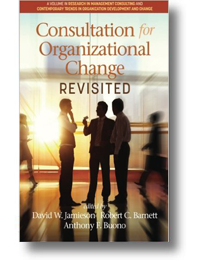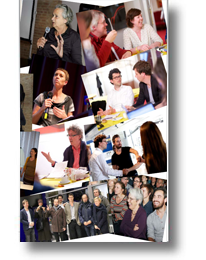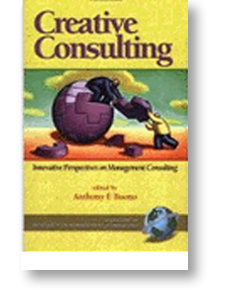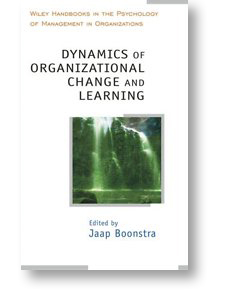This is the most up to date, complete and concise publication on the colors of change. It is written for both practitioners and academics that want to go beyond the basics. Those who already know about this change theory are likely to be surprised to find there is more to both the model and its applications Read more…
publications
The colors of change – revisited
In: R. Shani & D. Noumair. Research in Organizational Change and Development (vol. 26) - Emerald, 2018
Using causal loop diagrams to deal with complex issues
In: D. W. Jamieson, Barnett & A Buono (eds.) Consultation for Organizational Change Revisited - Information Age Publishing, 2016
A persistent stereotype of consultants is that of experts who have all the answers. However, the more complex problems are, the less consultants are able to provide ‘magical solutions’. Causal loop diagrams (CLDs) are a powerful tool to deal with issues characterized by content complexity and process complexity. Read more…
Knowing yourself as a change agent
In: D. W. Jamieson, Barnett & A Buono (eds.) Consultation for Organizational Change Revisited - Information Age Publishing, 2016
This chapter presents a questionnaire that measures individual change preferences based on a meta-theory of five paradigms of change. We describe its construction and improvement over a 13-year period, during which time more than 100,000 people have used the test as an instrument for self-reflection.
Read more…
Epilogue
In: K. Kuitenbrouwer, T. Goudswaard, A. Schamineé. SocialDesignForWickedProblems - HNI, 2014
Since a few years visual artists and designers in the Netherlands have banded together with organizations to adress social issues in a different way. They focus on complex issues where sensemaking and participation is key. During the last half year or so three more action research projects were taken on with lost of enthusiasm. The movement reported on this October at the Dutch Design Week. Read more…
A springboard for further learning
In: S.M. Adams, A. Zenzi (eds.) Preparing Better Consultants: The Role of Academia. Information Age Publishing, 2011
The challenges consultants face warrant ongoing education. When those practitioners have 15- 30 years of experience dealing with messy realities, however, it makes little sense for faculty to teach clean-cut models in standardized curricula. Read more…
Working interactively with causal loop diagrams
In: J. Boonstra, L. de Caluwé (eds.) Intervening and changing - Wiley, 2007
Causal loop diagrams can help in tackling complex issues effectively. Until the nineteen-seventies the literature focussed on the technique of such diagrams. Since then it has become evident that participation of stakeholders in making and applying such diagrams is desired to affect change. Read more…
Comparing psychotherapists’ and change agents’ approaches to change
In: A. Buono (ed.) Creative Consulting: Innovative Perspectives on Management Consulting - Information Age Publishing, 2004
In this chapter we explore the most prominent clusters of theories for changing organizations and changing people. Managers and management consultants make use of the first set of theories while psychotherapist use the latter. Our assumption was that there would be considerable overlap between these sets of theories. Read more…
Thinking about Change: Complexity and Multiplicity in Change Processes
In: J. Boonstra (ed): Dynamics in Organizational Change and Learning - Wiley, 2004
Given that more organizational change takes place unplanned than planned and more unsuccessful than successful, we think there is justification for reflection on why change does not work. This implies complexifying things rather than simplifying them: to search for hidden rules of the game, for informal processes, political mechanisms in organizations, etc. Read more…













